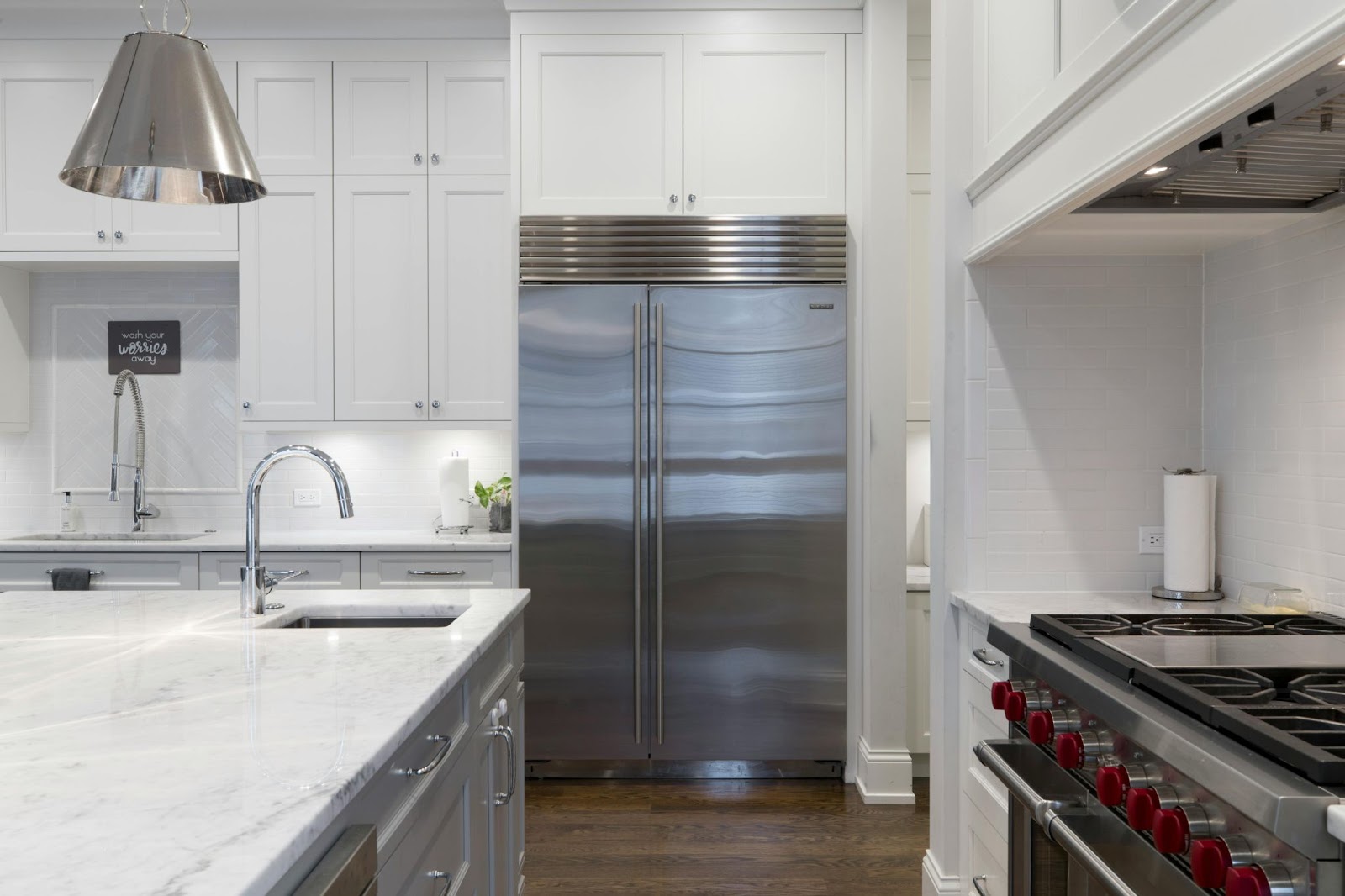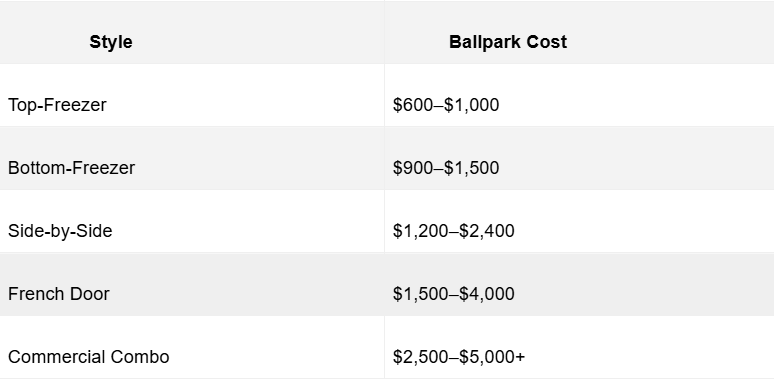
No one plans to shop for a new fridge.
You do it because your old one just… gave up. One day it’s chilling, the next it’s warming up your groceries like a slow-cooker. Great.
And so begins the search—a weirdly emotional journey involving too many options, not enough real-world info, and about nine tabs open on your browser at all times.
Let’s skip the overwhelm. Here’s what actually matters when you’re picking out a fridge-freezer that’ll live in your kitchen, probably for the next decade.
Step 1: Assess Your Kitchen Space and Dimensions
You’d think this is the easy part, right? You measure, you shop. But somehow, this is where most people mess up. And it’s not just about the width, though, yes, obviously measure the width. It’s about all the sneaky stuff no one tells you to consider.
Does the door swing hit your countertop? Do you have enough clearance above if you’ve got low-hanging cabinets? Can you still walk through the kitchen with the freezer door pulled open?

Oh—and don’t forget the path to the kitchen. If your new fridge can’t make it through the front door, it's going back on the truck. With attitude.
Step 2: Determine Your Storage Needs
How do you use your fridge? Some people pack it full with meal prep containers and grocery hauls that could feed a small army. Others? Just need a place for oat milk and leftover pizza.
Be honest about where you land.
Rough estimate: 4–6 cubic feet per adult. But layout trumps volume every time. A fridge with bad shelf design will feel cramped no matter how “big” it is.
And if you’ve ever opened your fridge, stared inside, and thought “it’s too small,” maybe it’s time to think bigger. Or smarter. A lot of serious home cooks are skipping standard models and going with a restaurant fridge freezer combo.
These aren’t just oversized—they’re built for performance: faster cooling, more space, super durable (stainless steel inside and out), and none of that weird plasticky shelving that warps after a year. If storage wars are a regular event in your kitchen, these are worth looking at.
Step 3: Consider Energy Efficiency
If you’re like most people, you don’t think about energy use until the bill spikes or the power goes out. But fridges don’t sleep. They hum along 24/7, and the older they are, the worse it gets.
That’s why energy efficiency should absolutely be on your radar. Look for the ENERGY STAR label—those models use up to 20% less energy, which can save you $80–$100 a year. That’s enough for a couple of nice dinners, or a utility bill you don’t groan over.
Some newer models also have inverter compressors (which adjust cooling power based on need) or vacation modes that save energy while you're away. If you care about long-term savings—or, you know, the planet—it’s worth checking for those details.
Step 4: Choose the Right Features
Here's where it gets tempting. Ice dispensers that light up. Cameras inside your fridge. An app that tells you when you're low on eggs. We’re officially in “tech trying too hard” territory.
Honestly? Most of us just want a fridge that keeps food cold and doesn’t die early. That said, a few features are worth your attention:
- Split cooling zones (keep smells from crossing over).
- Humidity-controlled crisper drawers (hello, longer-lasting produce).
- Reversible doors (can be a total lifesaver in small kitchens).
And yes, ice makers and water dispensers are great… when they work. But they also account for a ton of service calls. Just know what you’re signing up for.
Step 5: Set a Budget and Compare Brands
Time to talk dollars. Refrigerators range from “budget-friendly and basic” to “wow, this costs more than my rent.” The sweet spot? Somewhere in the middle. Durable, well-designed, not overloaded with features you’ll never use.
Here’s a quick idea of what you’re dealing with:

Brands like Whirlpool, LG, and Frigidaire tend to score well for reliability. Samsung and GE bring the high-tech flash, but read reviews.
Step 6: Read Reviews and Check Warranties
This is where the truth comes out.
The product page will tell you how beautiful the fridge is. The reviews will tell you how often it leaks, hums, or throws error codes you can’t decipher.
Don’t just skim the five stars. Look for patterns in the one- and two-star reviews. If a hundred people mention the same issue, chances are you’re not going to be the magical exception.
Warranties are another thing folks overlook. One year? Standard. But a strong 5- to 10-year warranty on the compressor? That’s a sign the brand actually trusts its own product. Bonus if parts and service are easy to get, because waiting six weeks for a replacement shelf? Absolutely not.
Go With the One That Actually Fits You
You’re not just buying a fridge. You’re buying a part of your daily routine.
You’ll open it in the morning, half-asleep. You’ll stare into it late at night, hoping something delicious magically appears. It’ll hold your groceries, your meal preps, your random half-eaten jars of sauce.
So, forget what’s trending. Pick the one that fits your kitchen. If it’s easy to use, runs quietly, and doesn’t fight you every time you open the drawer? You nailed it.



